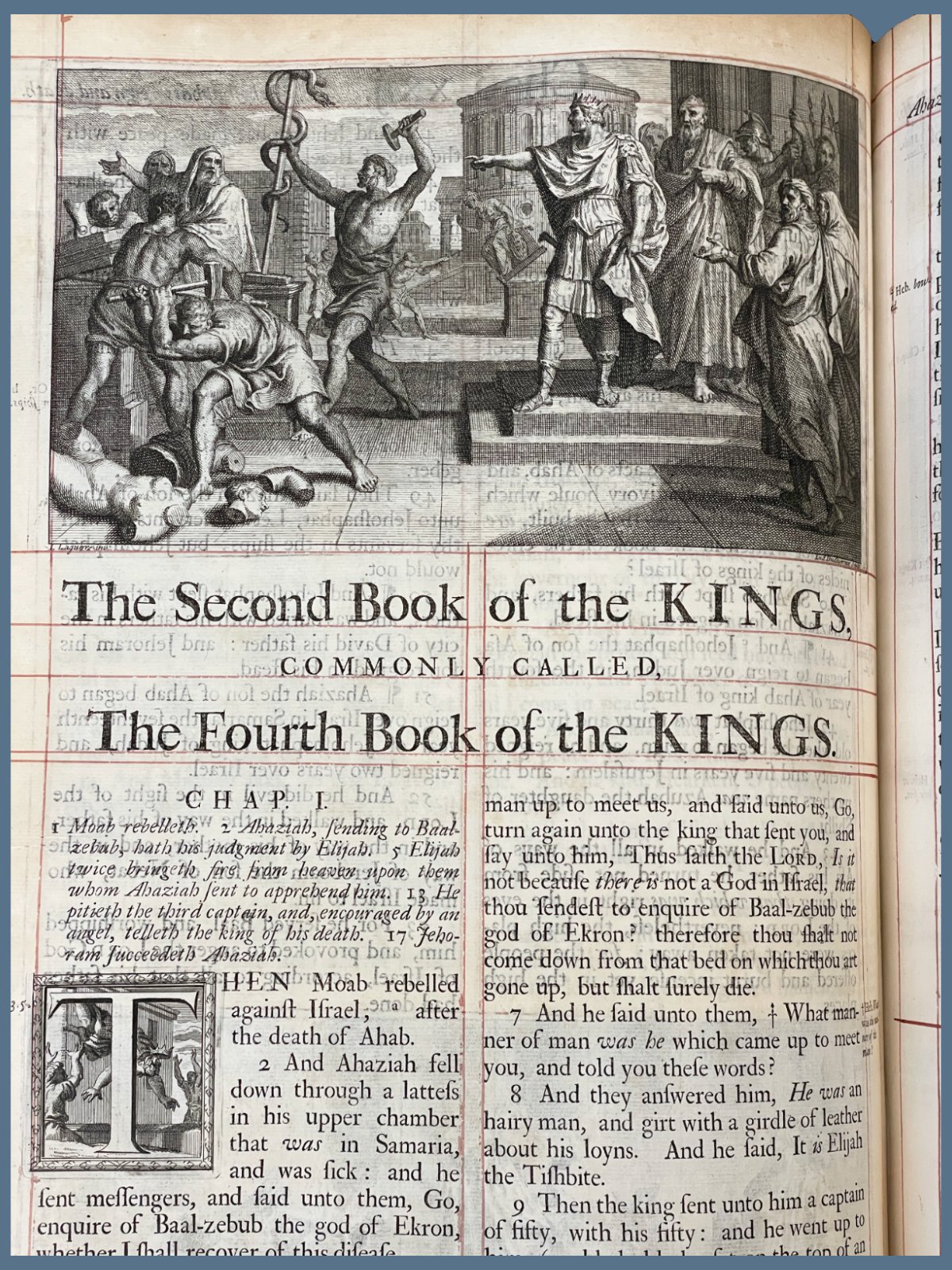1717 Vinegar Bible John Baskett Ruled in Red
Key Features
Baskett’s masterpiece that coined the term “baskett-case”
Size: Pulpit Folio (20.5” x 13” x 5”)
Font: Two Column Roman
Binding: Polished Black Calf
Extras: Ruled in Red, Over 60 steel engravings
Printer: John Baskett, London
SKU: N07
Key Features
Baskett’s masterpiece that coined the term “baskett-case”
Size: Pulpit Folio (20.5” x 13” x 5”)
Font: Two Column Roman
Binding: Polished Black Calf
Extras: Ruled in Red, Over 60 steel engravings
Printer: John Baskett, London
SKU: N07
Key Features
Baskett’s masterpiece that coined the term “baskett-case”
Size: Pulpit Folio (20.5” x 13” x 5”)
Font: Two Column Roman
Binding: Polished Black Calf
Extras: Ruled in Red, Over 60 steel engravings
Printer: John Baskett, London
SKU: N07
The Holy Bible, Containing the Old Testament and the New: Newly Translated out of the Original Tongues: And with the former Translations Diligently Compared and Revised. By His Majesty’s Special Command. Appointed to be Read in Churches.
Summary
The famous and monumental “Vinegar Bible” also known as the “Baskett full of errors,” and generally acknowledged as the most magnificent Bible printed in England.
Description
The text is the King James Version and was printed in large folio by John Baskett at Oxford in 1717-16. The volume is adorned with sixty beautifully engraved head- and tailpieces depicting scenes from the Bible that cover about one quarter of the page, and is also further adorned with engraved initials. This edition is the more elaborately illustrated 'A' variant with two general titles. The first one - engraved by Du-Bose- represents Moses writing the first words of Genesis. The second title shows a particularly fine view of Oxford. The text contains the famous typographical error in the headline of Luke XX that reads “The Parable of the Vinegar” and comprises the complete text of the Old Testament, Apocrypha, and New Testament, along with the two title pages and the preliminaries. Herbert calls it "A magnificent edition, printed in large type. With many plates at the beginning and end of books, engraved in steel from the designs of various artists. Some of the initial letters are similarly engraved... "
Collation
(*)2, *2, a-b2, c1, A-Z^6, Aa-Zz^6, Aaa-Zzz^6, Aaaa-Pppp^6, Qqqq^4, (Old Testament) [A]-[X]^6, Y^4 (New Testament). Complete.
Binding
Polished black calf with elaborate gilt paneled border. Gilt fillet rolls and central gilt lozenge on covers. Spine with six raised bands and extensive gilt tooled compartments. A red gilt tooled label with the words “Holy Bible”. Plain endpapers.
Condition
Infrequent foxing, mostly to margins. Some browned leaves on occasion; Qq5 small half-inch piece loss to margin; Bbb3 with 3” closed tear to tail impacting a few letters; [g]6 with 1” taped tear to head; [s]1 with 1” small tear to margin at tail.
Note
Famously, John Baskett set out to print the most beautiful, largest, and finest illustrated Bible ever printed, and he largely achieved his vision with this masterpiece of typography and illustration. Harry Carter, the historian of Oxford printing, states that "only Baskerville's Bible is its equal among English Bibles for beauty of type, impression, and paper." Equally famously, however, the glory of the typography was not matched by the accuracy of the proofreading, and the text is filled with errors. The most famous of these errors was the misprint in the headline of Luke XX, which ought to have read “The Parable of the Vineyard.” Instead, the text reads “The Parable of the Vinegar.” As a result, this edition of the Bible has, since its first appearance, been known as the “Vinegar Bible.” The bounteous nature of the edition’s misprints has also led to its appellation as the “Baskett full of errors” (playing upon the printer’s name).
References
Herbert 942.


















